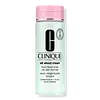What's inside
What's inside
 Key Ingredients
Key Ingredients

No key ingredients
 Benefits
Benefits

 Concerns
Concerns

 Ingredients Side-by-side
Ingredients Side-by-side

Water
Skin ConditioningLauramidopropyl Betaine
CleansingCocamidopropyl Hydroxysultaine
CleansingSodium Chloride
MaskingSodium Laureth Sulfate
CleansingSodium Cocoyl Sarcosinate
CleansingTea-Cocoyl Glutamate
CleansingButylene Glycol
HumectantAloe Barbadensis Leaf Juice
Skin ConditioningPEG-120 Methyl Glucose Dioleate
EmulsifyingSucrose
HumectantSodium Coco Pg-Dimonium Chloride Phosphate
CleansingCitric Acid
BufferingHexylene Glycol
EmulsifyingPolyquaternium-7
Caprylyl Glycol
EmollientDisodium EDTA
Methylchloroisothiazolinone
PreservativeMethylisothiazolinone
PreservativePhenoxyethanol
PreservativeWater, Lauramidopropyl Betaine, Cocamidopropyl Hydroxysultaine, Sodium Chloride, Sodium Laureth Sulfate, Sodium Cocoyl Sarcosinate, Tea-Cocoyl Glutamate, Butylene Glycol, Aloe Barbadensis Leaf Juice, PEG-120 Methyl Glucose Dioleate, Sucrose, Sodium Coco Pg-Dimonium Chloride Phosphate, Citric Acid, Hexylene Glycol, Polyquaternium-7, Caprylyl Glycol, Disodium EDTA, Methylchloroisothiazolinone, Methylisothiazolinone, Phenoxyethanol
Water
Skin ConditioningSodium Cocoyl Isethionate
CleansingGlycerin
HumectantSodium Methyl Cocoyl Taurate
CleansingCoco-Betaine
CleansingPotassium Cocoyl Glycinate
Potassium Benzoate
PreservativeSodium Chloride
MaskingPolyquaternium-67
Potassium Cocoate
EmulsifyingCitric Acid
BufferingFructooligosaccharides
HumectantSaccharide Hydrolysate
HumectantDisodium EDTA
Pullulan
1,2-Hexanediol
Skin ConditioningAllantoin
Skin ConditioningPanthenol
Skin ConditioningSea Water
HumectantSodium Acetate
BufferingButylene Glycol
HumectantChamomilla Recutita Flower Oil
MaskingCaprylic/Capric Triglyceride
MaskingBeta-Glucan
Skin ConditioningPhosphatidylcholine
EmulsifyingHyaluronic Acid
HumectantEthylhexylglycerin
Skin ConditioningCeramide NP
Skin ConditioningGlycine
BufferingHydrolyzed Hyaluronic Acid
HumectantGlutamic Acid
HumectantSerine
MaskingSodium Hyaluronate
HumectantLysine
Skin ConditioningAlanine
MaskingArginine
MaskingThreonine
Proline
Skin ConditioningWater, Sodium Cocoyl Isethionate, Glycerin, Sodium Methyl Cocoyl Taurate, Coco-Betaine, Potassium Cocoyl Glycinate, Potassium Benzoate, Sodium Chloride, Polyquaternium-67, Potassium Cocoate, Citric Acid, Fructooligosaccharides, Saccharide Hydrolysate, Disodium EDTA, Pullulan, 1,2-Hexanediol, Allantoin, Panthenol, Sea Water, Sodium Acetate, Butylene Glycol, Chamomilla Recutita Flower Oil, Caprylic/Capric Triglyceride, Beta-Glucan, Phosphatidylcholine, Hyaluronic Acid, Ethylhexylglycerin, Ceramide NP, Glycine, Hydrolyzed Hyaluronic Acid, Glutamic Acid, Serine, Sodium Hyaluronate, Lysine, Alanine, Arginine, Threonine, Proline
 Reviews
Reviews

Ingredients Explained
These ingredients are found in both products.
Ingredients higher up in an ingredient list are typically present in a larger amount.
Butylene Glycol (or BG) is used within cosmetic products for a few different reasons:
Overall, Butylene Glycol is a safe and well-rounded ingredient that works well with other ingredients.
Though this ingredient works well with most skin types, some people with sensitive skin may experience a reaction such as allergic rashes, closed comedones, or itchiness.
Learn more about Butylene GlycolCitric Acid is an alpha hydroxy acid (AHA) naturally found in citrus fruits like oranges, lemons, and limes.
Like other AHAs, citric acid can exfoliate skin by breaking down the bonds that hold dead skin cells together. This helps reveal smoother and brighter skin underneath.
However, this exfoliating effect only happens at high concentrations (20%) which can be hard to find in cosmetic products.
Due to this, citric acid is usually included in small amounts as a pH adjuster. This helps keep products slightly more acidic and compatible with skin's natural pH.
In skincare formulas, citric acid can:
While it can provide some skin benefits, research shows lactic acid and glycolic acid are generally more effective and less irritating exfoliants.
Most citric acid used in skincare today is made by fermenting sugars (usually from molasses). This synthetic version is identical to the natural citrus form but easier to stabilize and use in formulations.
Read more about some other popular AHA's here:
Learn more about Citric AcidDisodium EDTA plays a role in making products more stable by aiding other preservatives.
It is a chelating agent, meaning it neutralizes metal ions that may be found in a product.
Disodium EDTA is a salt of edetic acid and is found to be safe in cosmetic ingredients.
Learn more about Disodium EDTAChances are, you eat sodium chloride every day. Sodium Chloride is also known as table salt.
This ingredient has many purposes in skincare: thickener, emulsifier, and exfoliator.
You'll most likely find this ingredient in cleansers where it is used to create a gel-like texture. As an emulsifier, it also prevents ingredients from separating.
There is much debate on whether this ingredient is comedogenic. The short answer - comedogenic ratings don't tell the whole story. Learn more about comegodenic ratings here.
The concensus about this ingredient causing acne seems to be divided. Research is needed to understand if this ingredient does cause acne.
Scrubs may use salt as the primary exfoliating ingredient.
Learn more about Sodium ChlorideWater. It's the most common cosmetic ingredient of all. You'll usually see it at the top of ingredient lists, meaning that it makes up the largest part of the product.
So why is it so popular? Water most often acts as a solvent - this means that it helps dissolve other ingredients into the formulation.
You'll also recognize water as that liquid we all need to stay alive. If you see this, drink a glass of water. Stay hydrated!
Learn more about Water